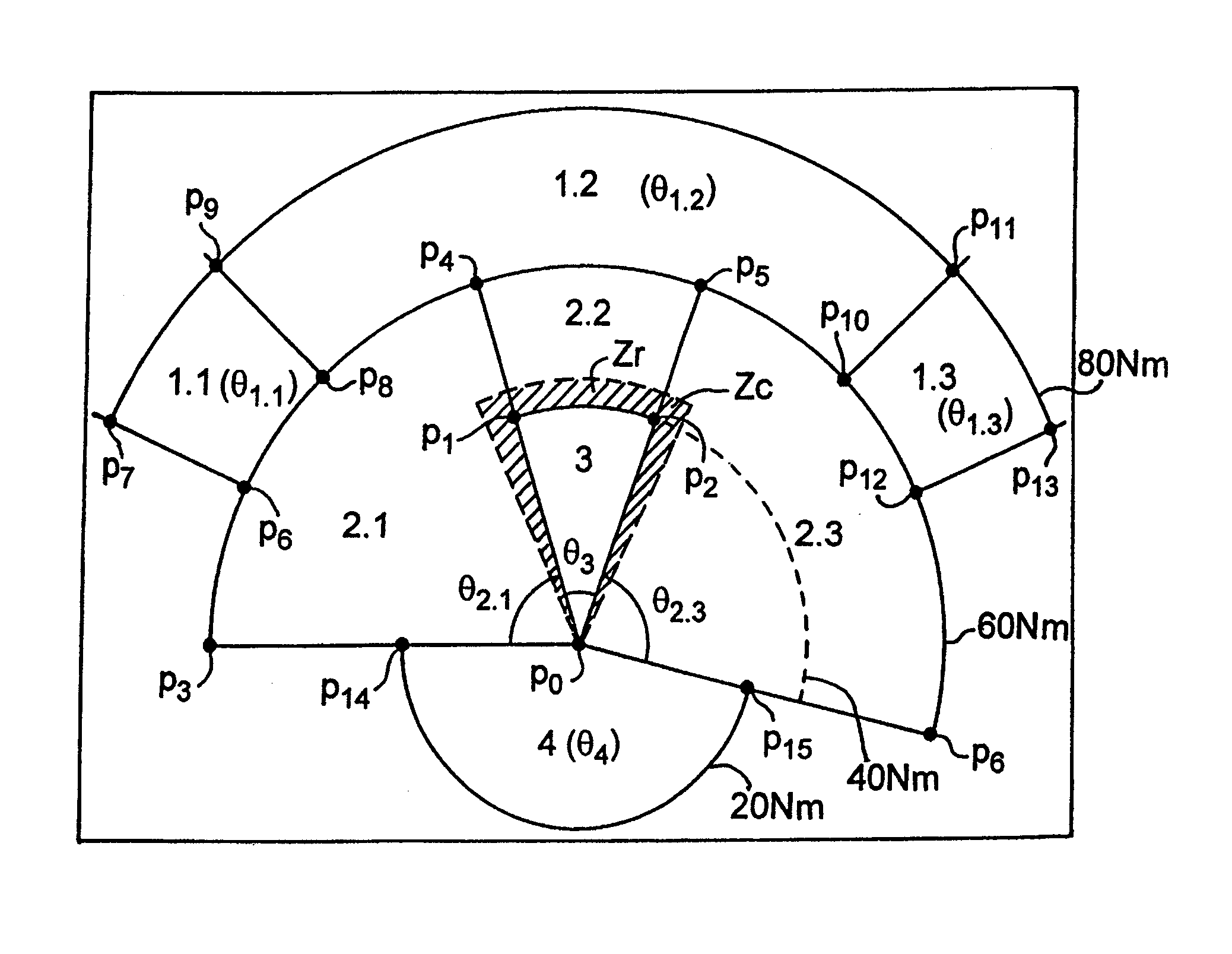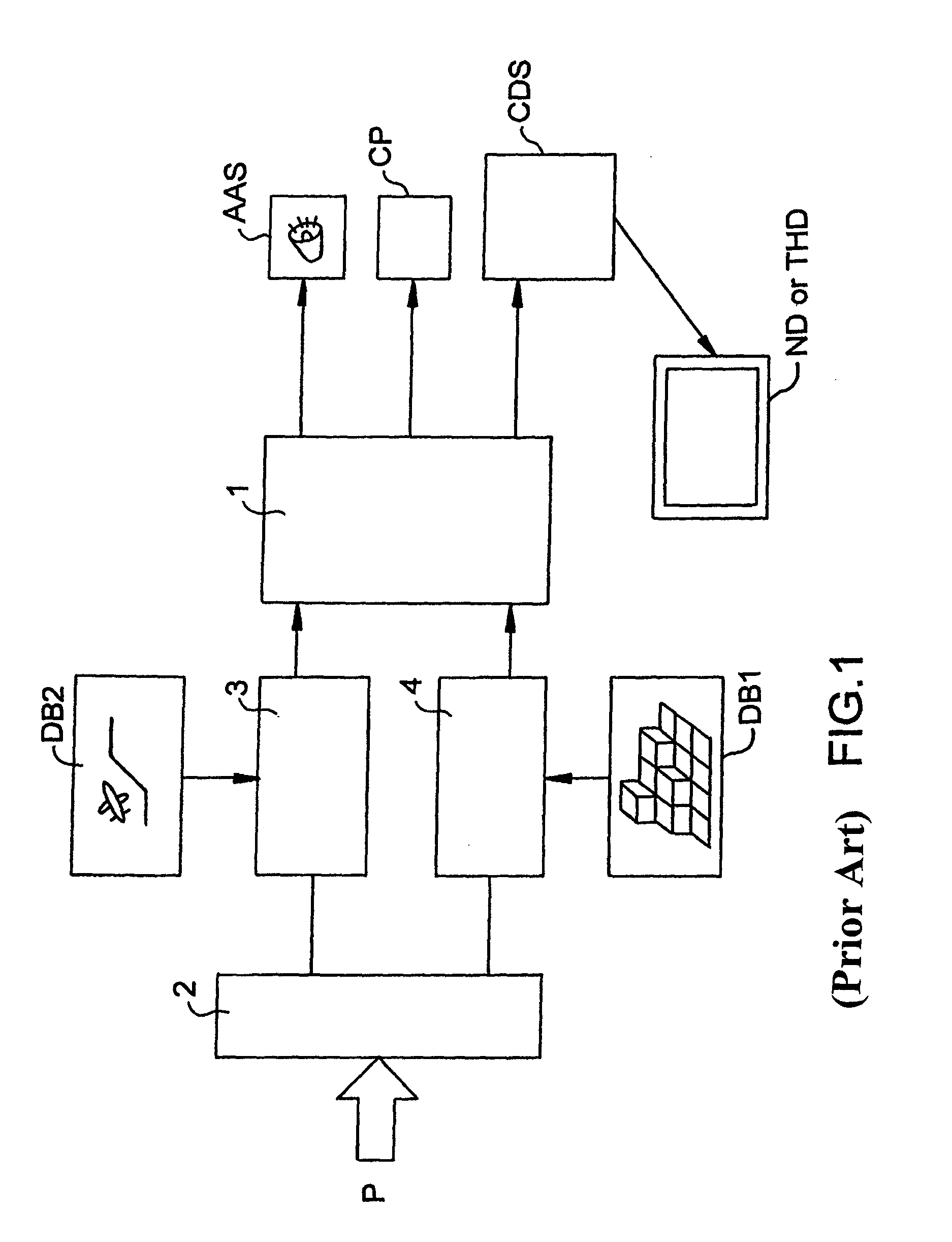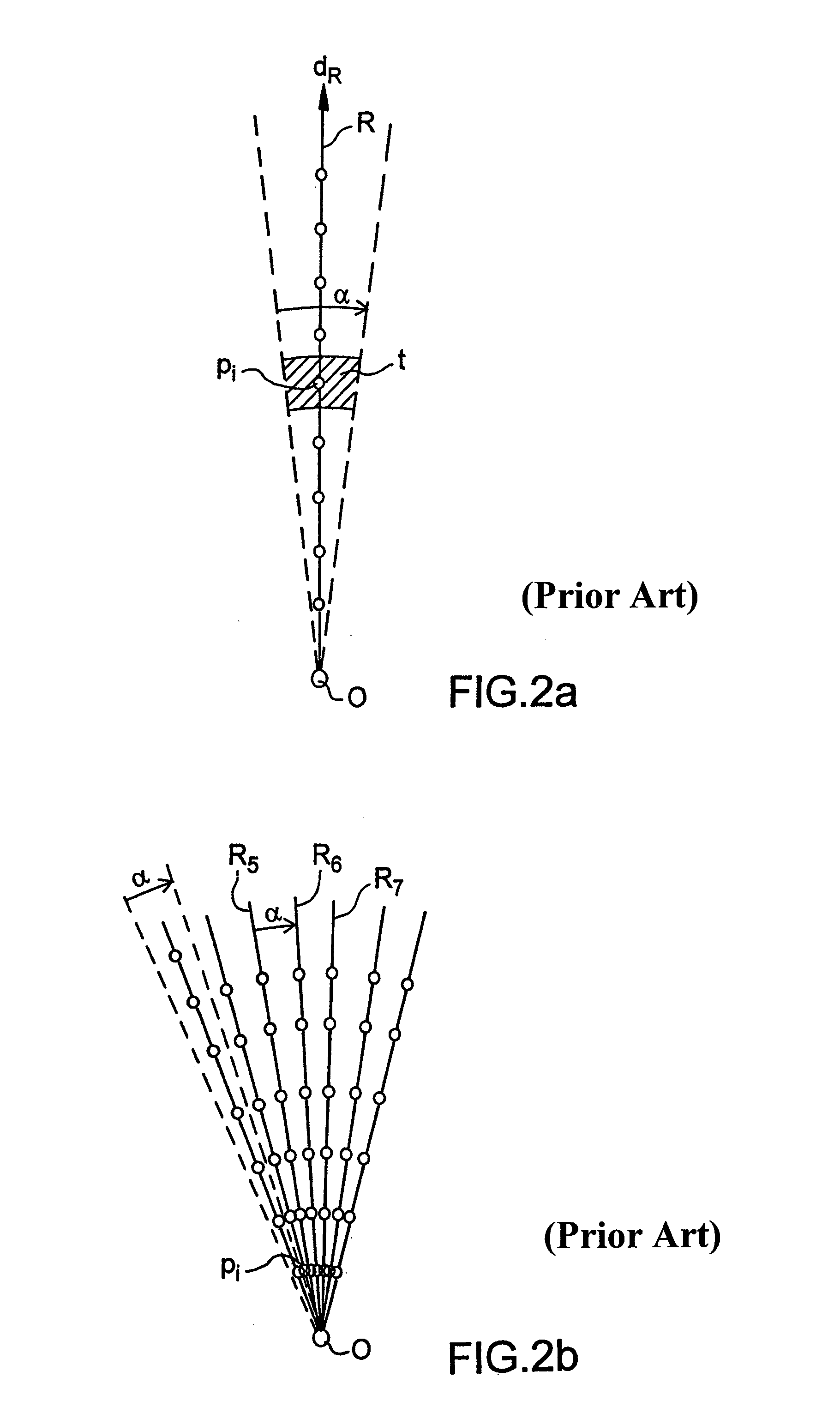Method of processing topographic data in real time in an aircraft, in order to display said data
a topographic data and aircraft technology, applied in the field of real-time topographic data processing in the aircraft, can solve the problems of time-consuming and laborious, difficult to superimpose on the map background image other graphic information, and inability to follow in real-time the path of the aircraft, etc., and achieve the effect of less information
- Summary
- Abstract
- Description
- Claims
- Application Information
AI Technical Summary
Benefits of technology
Problems solved by technology
Method used
Image
Examples
Embodiment Construction
[0040]The figures show subdivisions and any numerical indications are only examples, given by way of indication. The invention is not limited to just these examples.
[0041]FIG. 3a gives a first example of a subdivision of an operating zone of an aircraft A into individual zones according to the operational interest of these individual zones, according to a method according to the invention.
[0042]The operational interest of an individual zone depends on different factors, including: the movement of the aircraft in a straight line (speed of movement) or in a turn (angular rotation speed), the situation in relation to the aircraft, front, back or side, the distance in relation to the aircraft.
[0043]These various aspects are taken into consideration together in combination, to determine an appropriate subdivision, according to different criteria. Among these criteria, the following criteria can be mentioned, in relation to FIG. 8a: [0044]The bearing angle φ of a radial R with the current...
PUM
 Login to View More
Login to View More Abstract
Description
Claims
Application Information
 Login to View More
Login to View More - R&D
- Intellectual Property
- Life Sciences
- Materials
- Tech Scout
- Unparalleled Data Quality
- Higher Quality Content
- 60% Fewer Hallucinations
Browse by: Latest US Patents, China's latest patents, Technical Efficacy Thesaurus, Application Domain, Technology Topic, Popular Technical Reports.
© 2025 PatSnap. All rights reserved.Legal|Privacy policy|Modern Slavery Act Transparency Statement|Sitemap|About US| Contact US: help@patsnap.com



